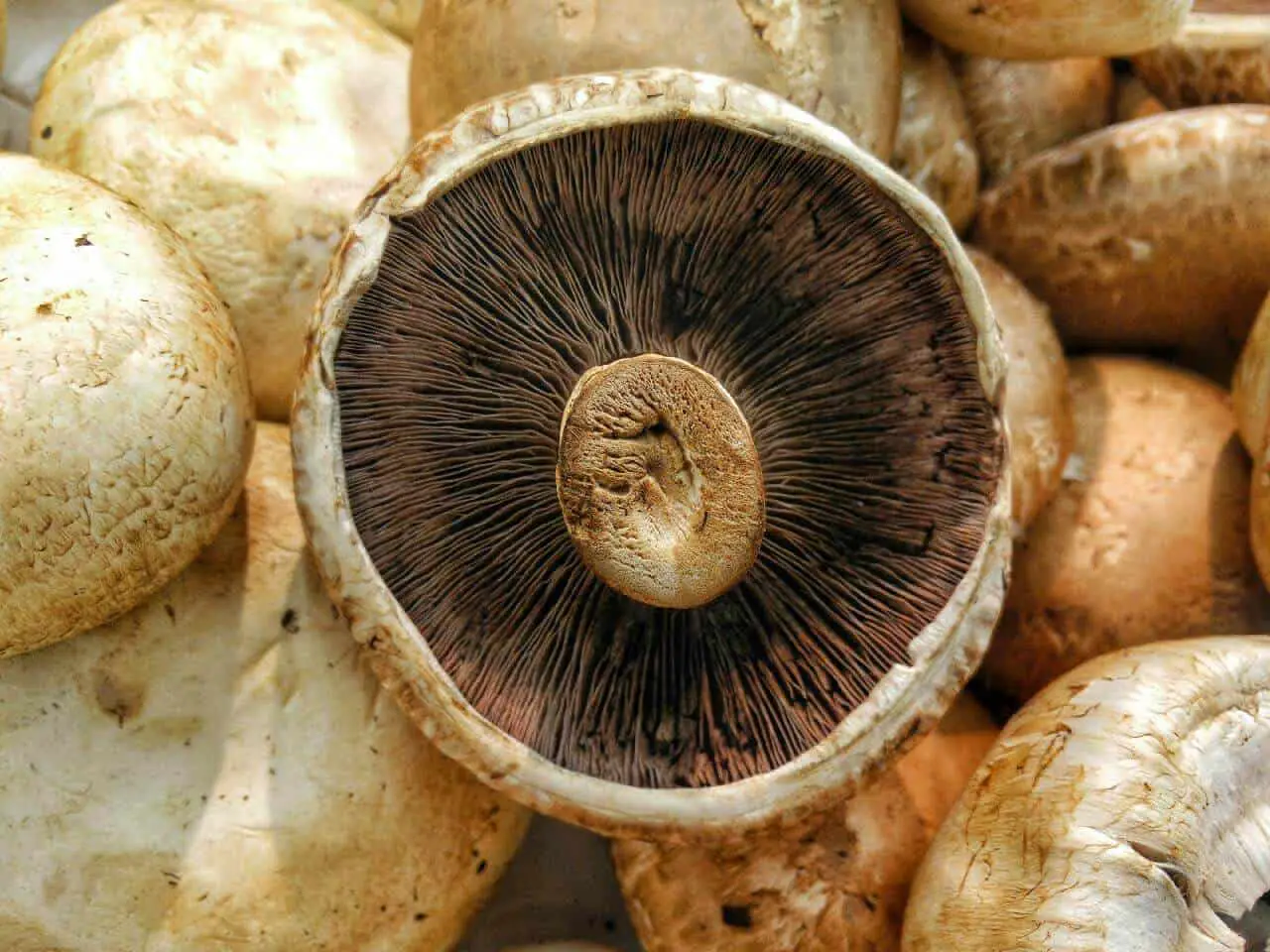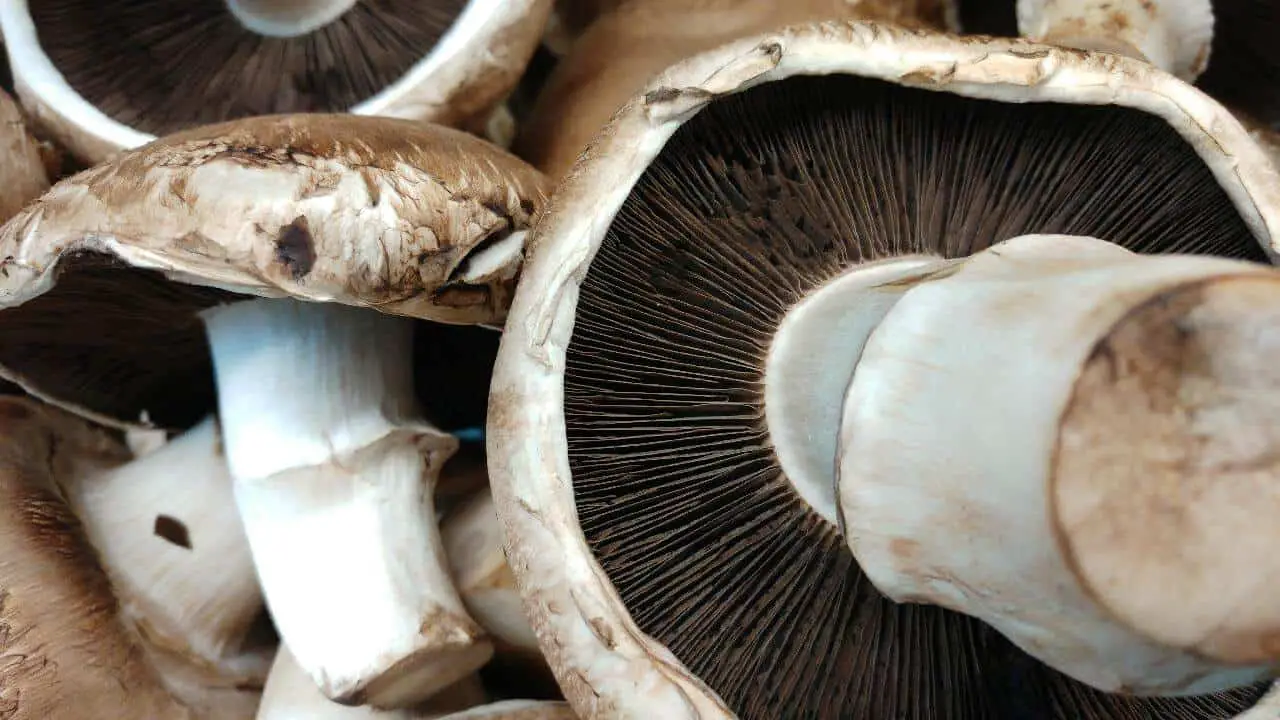Portobello mushrooms are tasty, meaty mushrooms that have an earthy flavor. They have an easily identifiable dark brown flat cap once they are fully mature and can be eaten either while it’s very little or once it’s fully mature. As a flavorful delicacy, they are eaten freshly baked or grilled in hamburgers, pizzas, and other recipes. They are rich in fiber, vitamins B6 and D, antioxidants, niacin, potassium, and selenium to name a few of their nutrients. This mushroom was first discovered by a botanist named Joseph Pitton de Tournefort in 1707 and is believed to have been discovered in Italy. However, in modern times, they are grown across Europe, Australia, Africa, and America. What’s more, is the fact that they are affordable and become even more affordable when you choose to grow them yourself.
Portobello Mushroom Basics
Method of Propagation: Portobello mushrooms are typically grown from their spores.
Planting Season: Portobello mushrooms can be grown all year round as long as the conditions are right.
Harvest Period: Portobello mushrooms are ready for harvest within three to four weeks of planting their spores.
Soil Planting Temperature: The ideal planting temperature for Portobello mushrooms is 65F to 72F (18C to 22C). Typically, like most mushrooms, they grow faster at warmer temps. and slower at cooler temps. At extremely cold temps., they may not grow at all.
Planting Soil: Sterilized manure-based compost is ideal for growing Portobello mushrooms.
Moisture and Humidity: Mushrooms lose water to the atmosphere easily and this is why they have to be watered regularly. The lower the humidity, the faster they lose water, the higher the humidity, the more waterlogged they become. Some sort of balance should be achieved.
How to grow Portobello Mushrooms Indoors

Growing portobello mushrooms indoors is quite easy to do and you’ll only need the following:
- A container for planting (This should be at least 8 inches deep and 5 x 5 feet in length and breadth).
- A spray bottle.
- Newspaper.
- Peat moss.
- Compost (A manure-based option is suitable).
- Distilled water.
- Portobello spores.
To begin planting, you’ll first have to prep your container for planting. Fill your container up to three-fourths of its depth with compost. Organic’s New Earth compost is a great option, but any manure-based compost you’ve got available is fine. Once the container’s filled, add in your portobello spores and mix them into the compost. Pat it down and place the container in a dark place. A room or a shut cupboard will do. Leave it alone for a period of about two to three weeks. You’ll see a white film of mycelium gradually begin to appear.
You should note that while the container is in a dark location, you should be mindful of its temperature. 65F to 72F is appropriate for the development of the spores. Now that the mycelium appears, it’s finally time to add the peat moss. Add a thin layer of peat moss over the mycelium, then cover the container with the newspaper you’ve got available.
At this point, all you’ve got to do is keep the contents of the container moist by filling your spray bottle with water and spritzing the container. Do this religiously for the next two to three weeks. During this period, your mushrooms should begin to appear. If you still do not see them, don’t panic just wait for a little bit. However, once you see them begin to appear, you can remove the newspaper as it’s no longer needed. In about two more weeks, your mushrooms should have grown to sizable portions ready for harvest.
There you have it, a very easy way to grow your portobello mushrooms indoors.
How to Grow Portobello Mushrooms Outdoors

If planting indoors isn’t for you, here’s a tutorial on how to plant them outdoors. Similar to the indoor planting technique, you’ll need:
- A spray bottle.
- Newspaper.
- Peat moss.
- Black plastic.
- Compost (A manure-based option is suitable).
- Distilled water.
- Portobello spores.
- A raised garden bed (That’s at least 8 inches deep and 4 x 4 ft in length and breadth)
To begin with, here’s how to build your raised garden bed if you haven’t got any made yet. You’ll need to buy four 4-foot by 8-inch wooden planks, 16 pieces of rebar each 4 feet long, and a rubber mallet.
Arrange your boards by positioning them next to each other just as they would be if you nailed them to each other. Hammer the rebars into the soil to support the planks. This is how you build your raised garden bed.
Next on your list is filling the garden bed with your manure-based compost. Once again, Organic’s New Earth compost is a great option, but any manure-based compost you’ve got available is fine. The garden bed should only be three-fourths filled with compost. Now you’ve only got to sterilize the compost so that wild varieties of mushrooms don’t grow. This is done by covering the raised bed with a layer of newspapers and black plastic. The heat generated by the sun through radiation over some time, say two weeks will sorta cook the compost.
Once sterilization has been completed, it is time to plant your portobello spores. Remove the newspapers and black plastic. Add in your portobello spores and mix them into the compost before patting the mixture down a little. Leave it alone for a period of about two to three weeks. You’ll see a white film of mycelium gradually begin to appear. Now is the time to cover the garden bed with a layer of peat moss and newspaper. Keep spraying the bed with distilled water twice daily for about two weeks, and you’ll begin to see the mushrooms appear. You can harvest them while they’re small or once they’ve matured a little.
Want to know more about gardening ?
Fill in your email address in the form below and you'll receive all the latest updates directly in your in-box.
Thank you for subscribing.
Something went wrong.